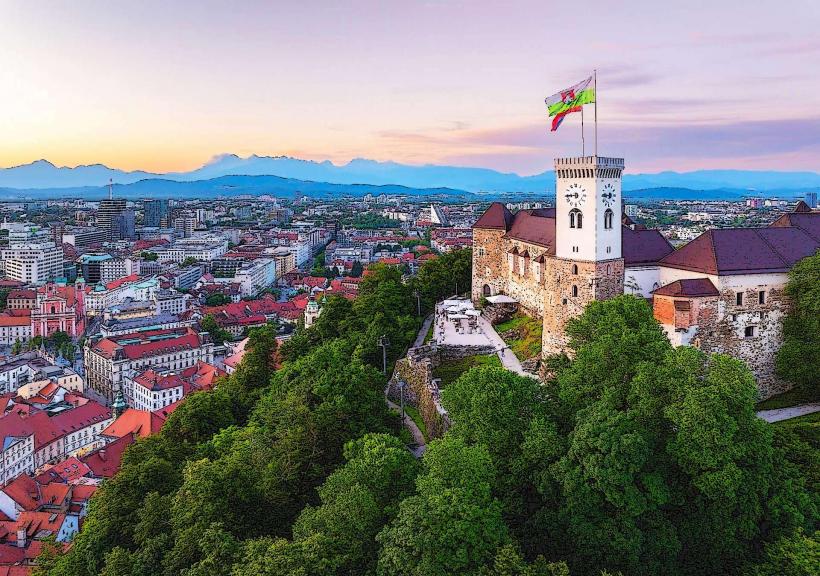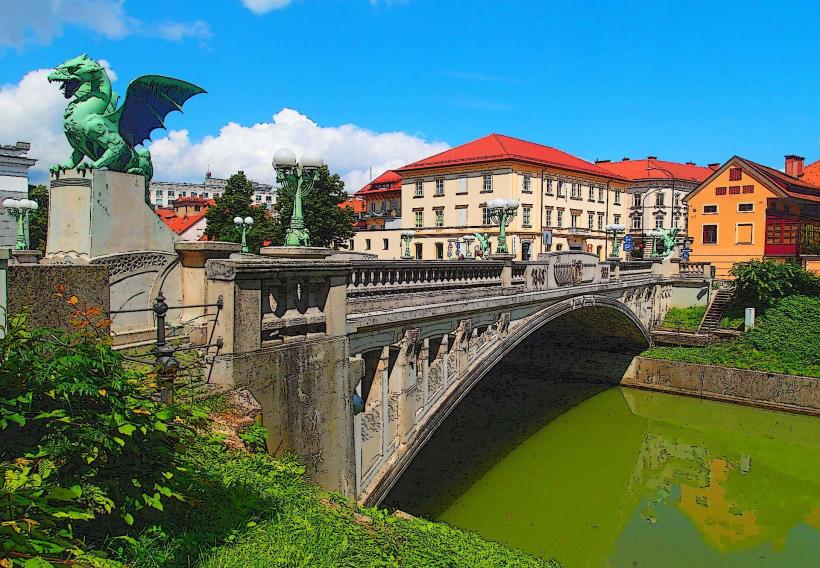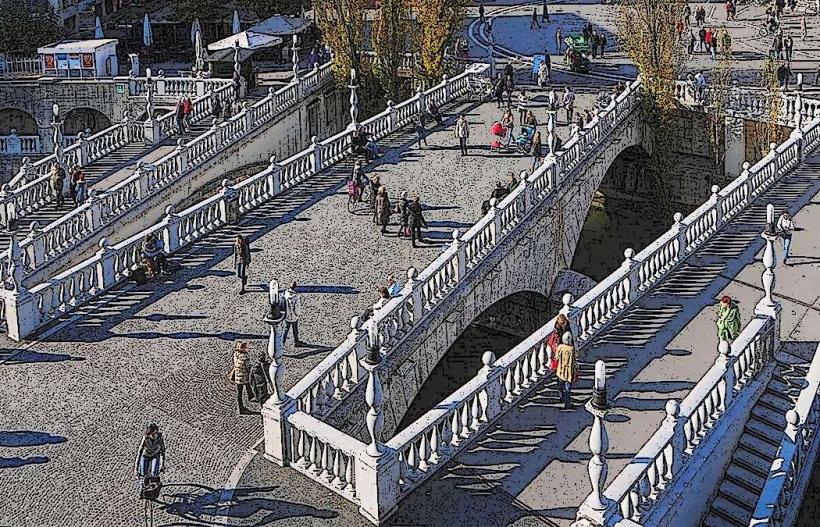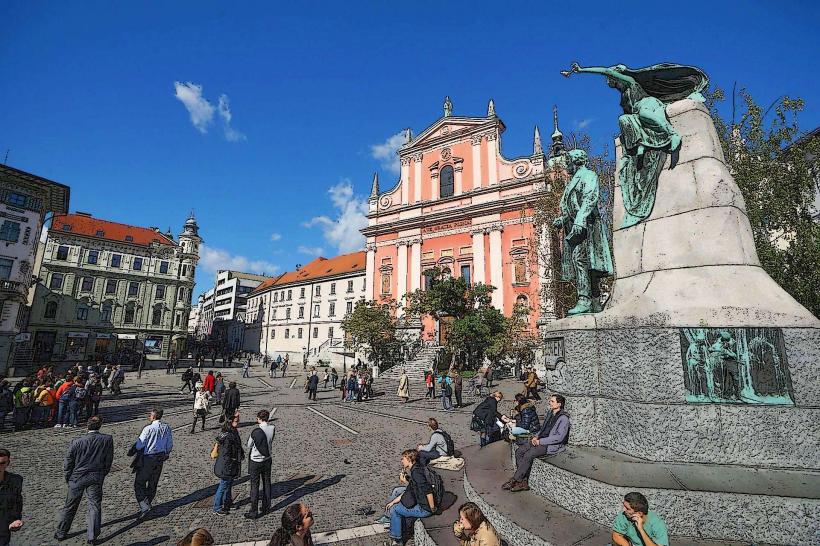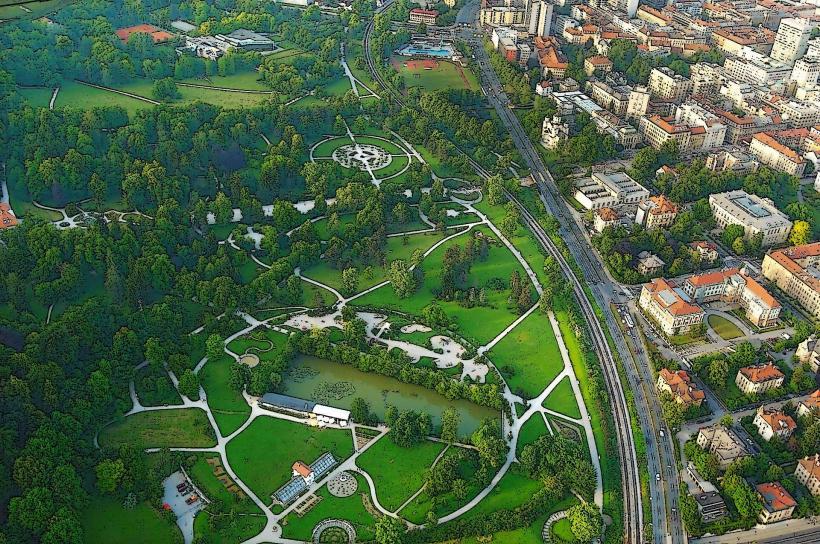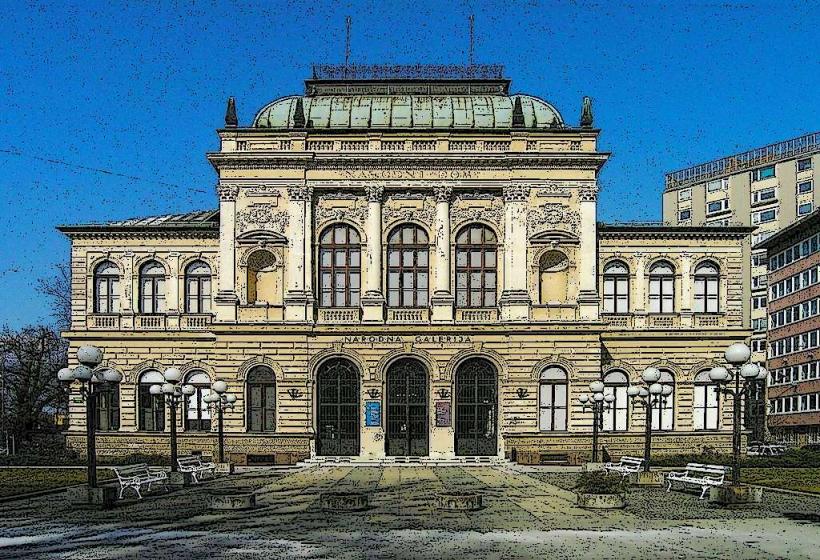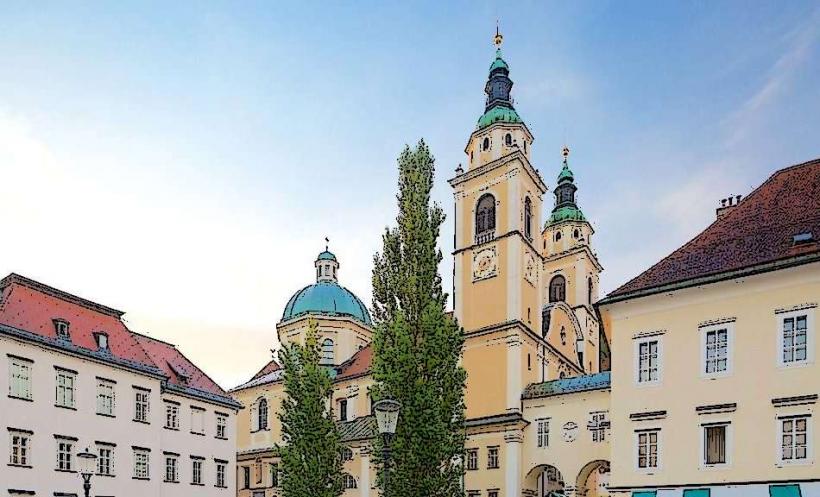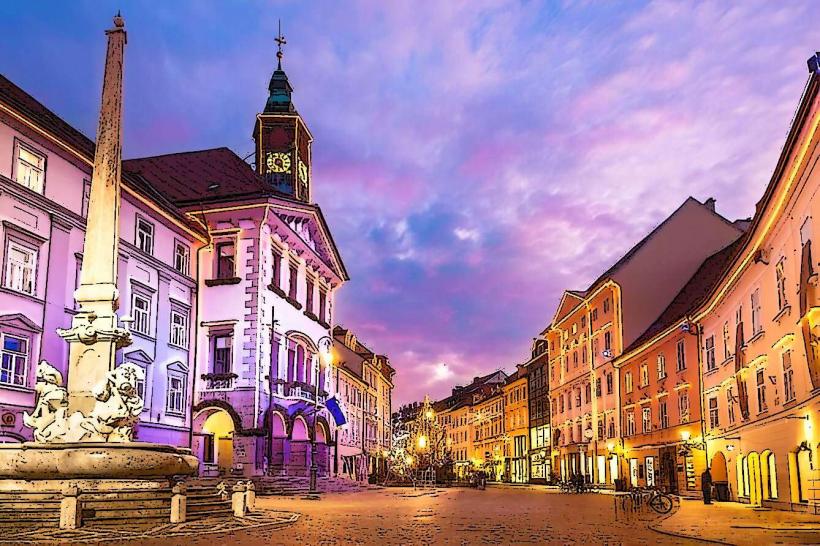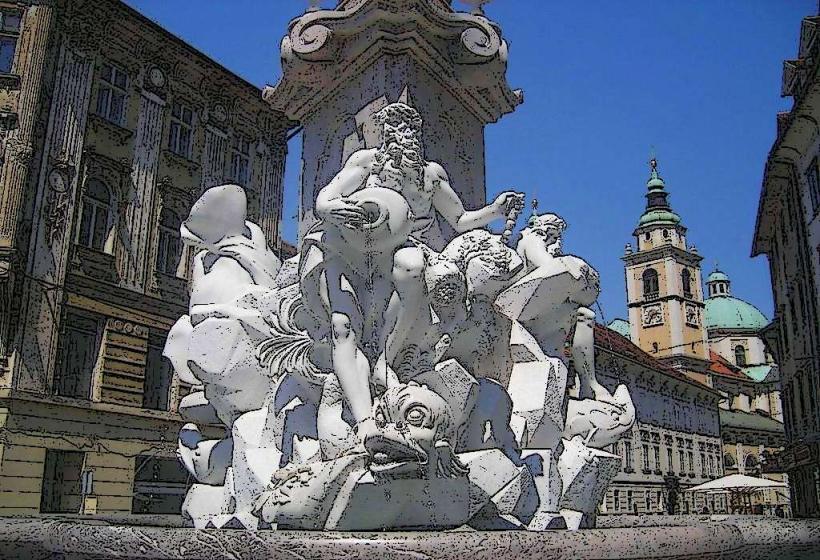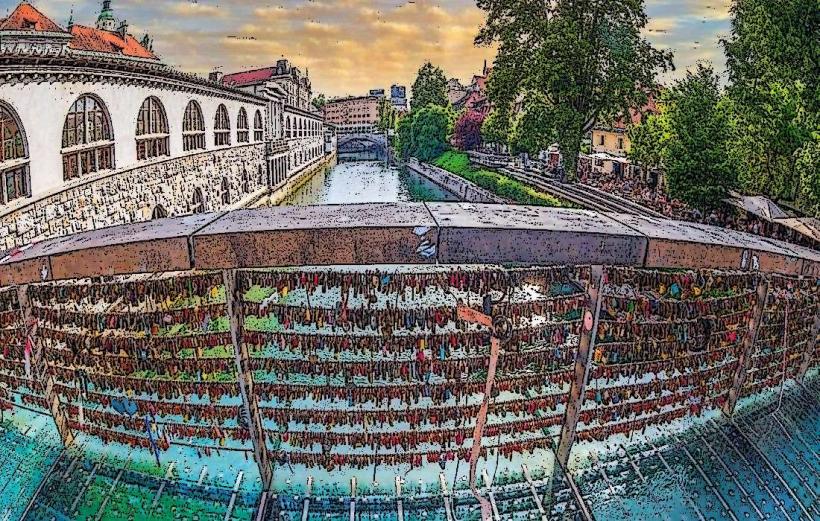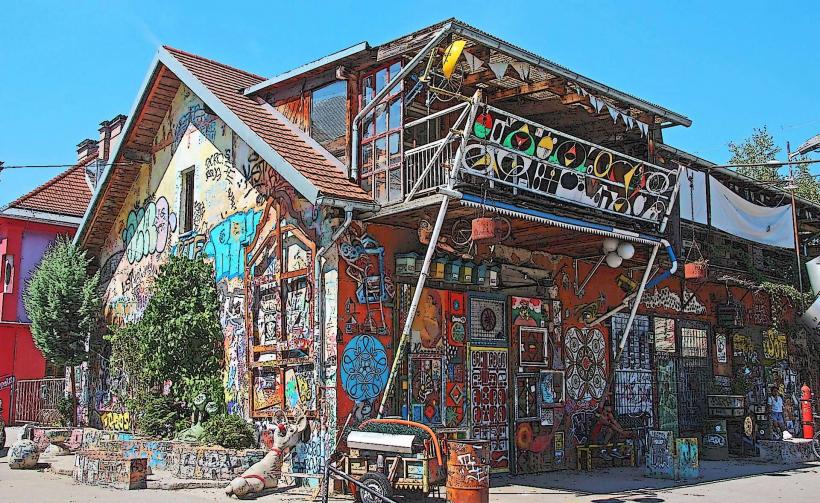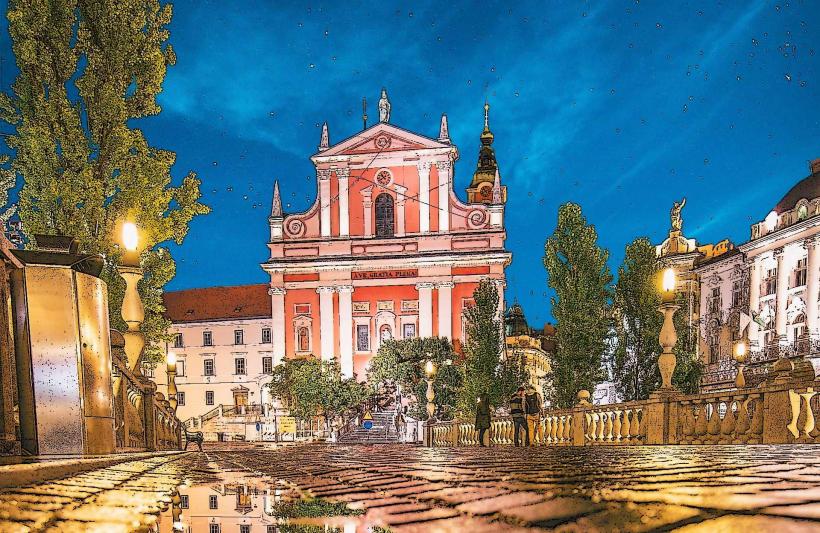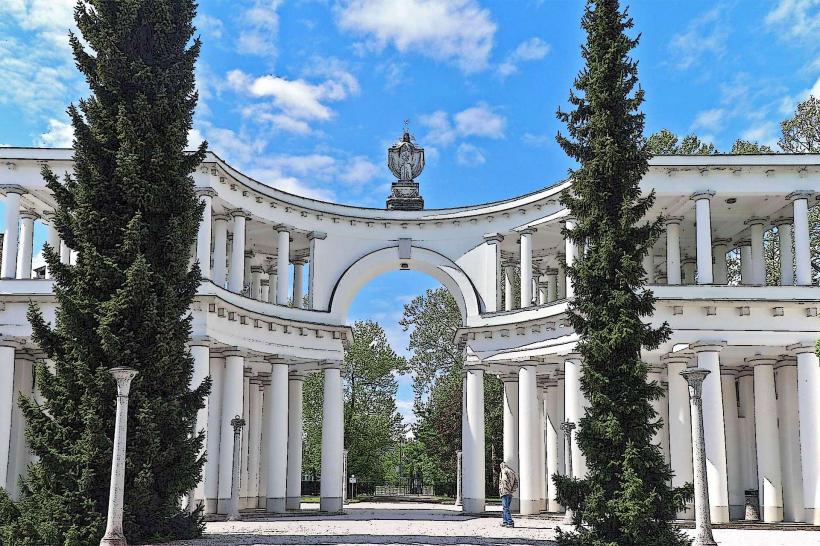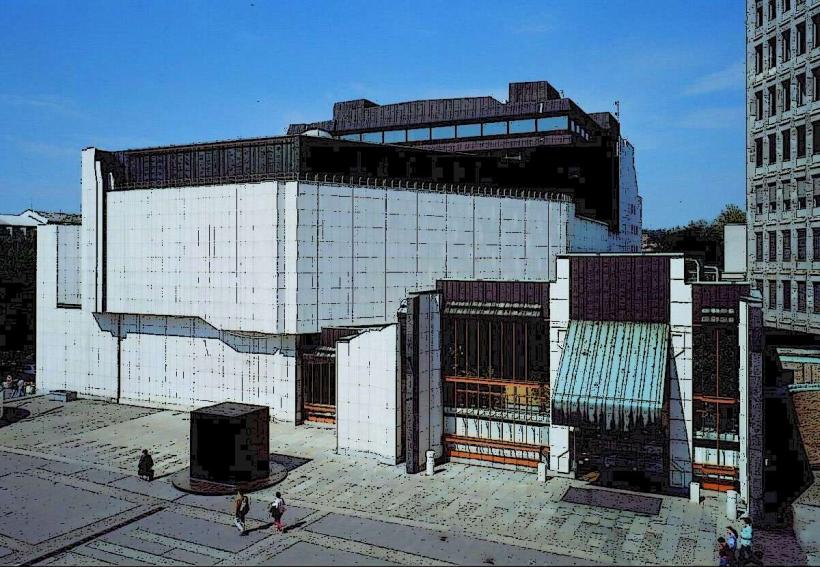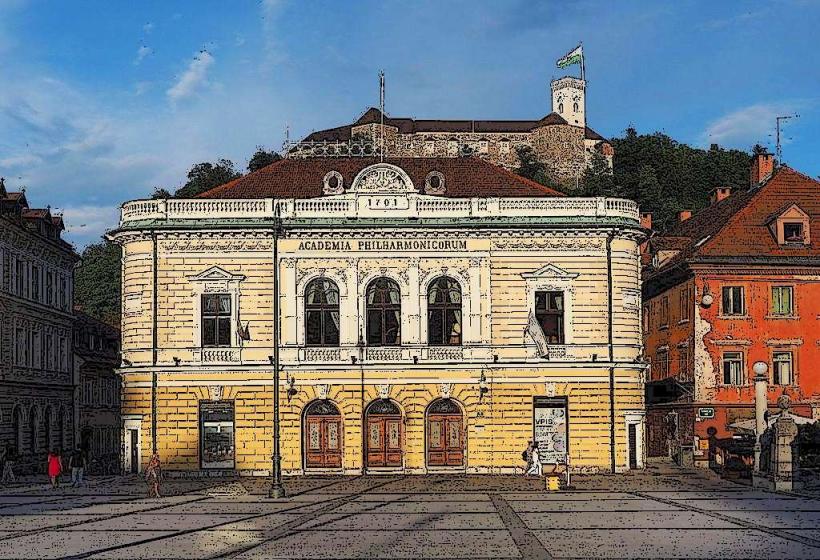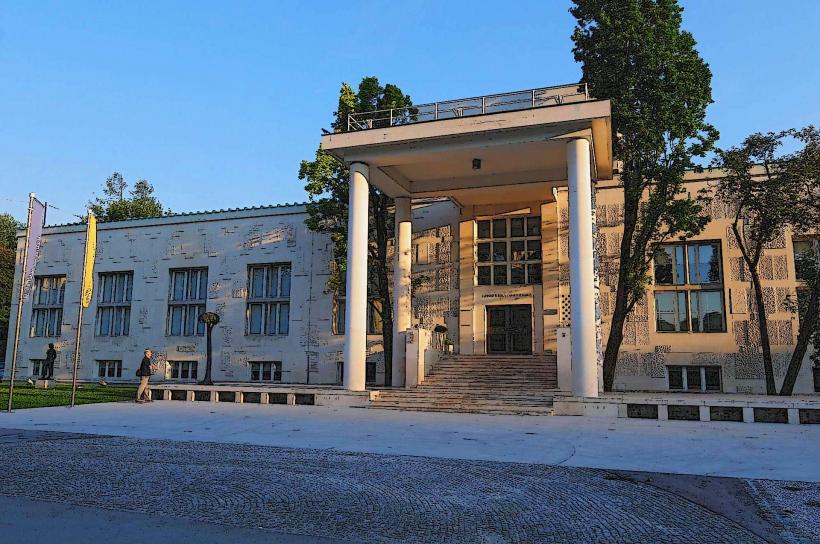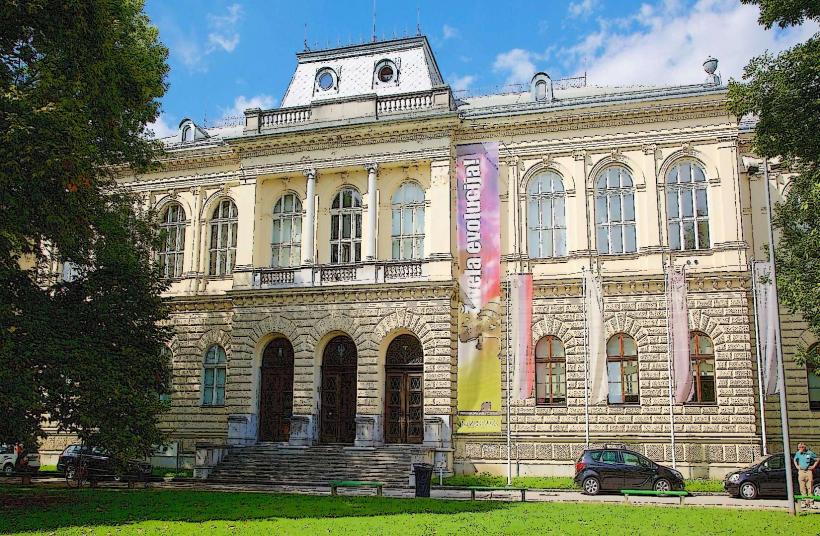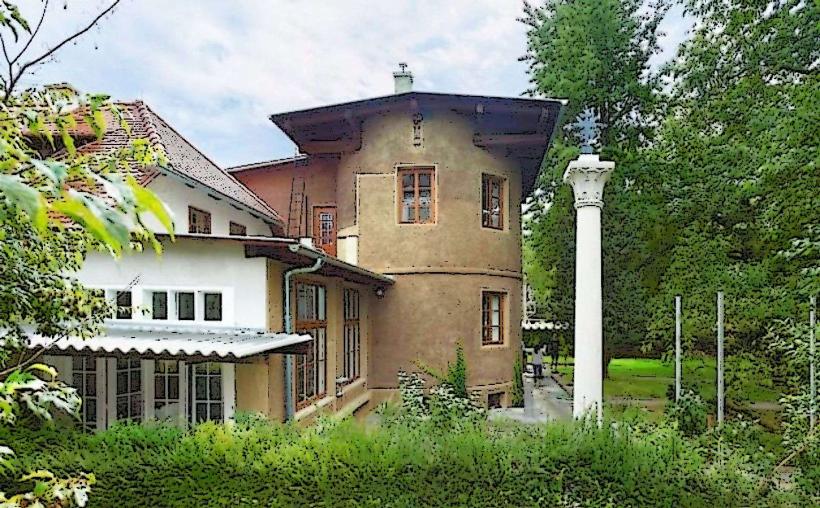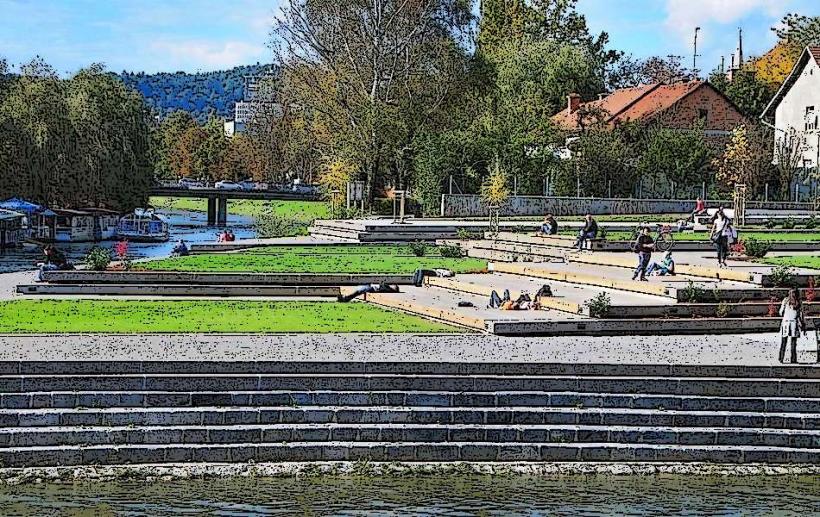Information
Landmark: Central MarketCity: Ljubljana
Country: Slovenia
Continent: Europe
The Central Market (Slovene: Osrednja tržnica) in Ljubljana, Slovenia, is a vibrant and bustling market located in the heart of the city. It is one of the most iconic and historical public markets in Slovenia, offering a mix of fresh produce, local specialties, artisanal goods, and international food items. It has played a significant role in the city's everyday life for centuries and remains a popular destination for both locals and tourists.
General Overview
- Name: Central Market (Osrednja tržnica)
- Location: Ljubljana, Slovenia, near the Ljubljanica River, between Vodnik Square and Pogačar Square.
- Established: Originally established in the 19th century, with the current market hall completed in 1940.
- Type: Public market, outdoor and indoor sections
- Architectural Design: The market was designed by renowned Slovenian architect Jože Plečnik, who is also responsible for many of Ljubljana’s most famous buildings and public spaces.
Historical Background
The origins of Ljubljana’s Central Market date back to the early 19th century, when the need for a central marketplace became evident as the city expanded. Before the market was formalized, vendors sold goods in various locations throughout the city, including along the Ljubljanica River and in open squares.
Architectural Transformation: In the early 20th century, Ljubljana underwent significant urban development, and the market was designed by Jože Plečnik, who envisioned a central space that would provide a more organized, visually appealing, and functional marketplace.
Opening of the Market: The current market structure was completed in 1940. Plečnik’s design emphasized a blend of functionality, beauty, and openness, using classical architectural elements combined with modern features.
Post-World War II: After World War II, the market became an even more integral part of everyday life in Ljubljana, evolving into a central location for shopping, socializing, and cultural exchange. It has remained a popular place for both locals and visitors.
Architecture and Design
The Central Market is split into indoor and outdoor sections, making it a lively space throughout the year. The design is a perfect reflection of Jože Plečnik’s vision, combining classical and modern styles to create an inviting, functional environment.
Outdoor Market: The outdoor market is located along the Pogačar Square and Vodnik Square and features rows of market stalls. These stalls sell fresh produce, flowers, fruits, vegetables, and local products such as cheese, cured meats, honey, and handmade crafts.
Indoor Market Hall: The indoor portion of the Central Market is housed in a covered hall designed by Plečnik, with arched stone columns, large windows, and beautiful vaulted ceilings. It is home to a variety of food vendors, offering fresh fish, meat, bread, pastries, and more. The market hall also features some specialty shops offering artisan products, gourmet goods, and seasonal items.
Ljubljanica River: The market lies right next to the Ljubljanica River, with a picturesque setting that enhances the visitor experience. The market also has access to several riverfront cafés and restaurants, allowing customers to enjoy the surroundings while shopping.
Products and Offerings
The Central Market is renowned for offering a wide variety of fresh, locally sourced products, including:
Fresh Produce: Fruits, vegetables, and herbs from local farmers are the market’s main offerings. Many of the vendors are local farmers or small-scale producers who sell their fresh goods directly to customers.
Meats and Fish: The indoor section houses several butchers and fishmongers, offering a variety of meats, sausages, and fresh fish.
Dairy Products: Fresh cheeses, milk, butter, and other dairy products from Slovenian farms are readily available.
Baked Goods: Local bakeries offer a variety of freshly baked breads, cakes, and pastries, including traditional Slovenian specialties like potica (a rolled cake with fillings such as walnut or poppy seed).
Local Specialties: Vendors also sell honey, wine, olive oil, jams, herbal teas, and other locally made food products.
Crafts and Souvenirs: In addition to food, the market has stalls selling handmade crafts, pottery, and traditional Slovenian souvenirs such as wool scarves, wooden carvings, and decorative items.
Cultural Significance
The Central Market holds a central role in the daily life of Ljubljana and has historical and cultural importance:
Social and Cultural Hub: Beyond being a place for buying goods, the market is a social space where locals meet, chat, and catch up with neighbors. It also plays a role in the social life of the city, with events, festivals, and activities held throughout the year.
Promoting Local Produce: The market showcases the rich agricultural diversity of Slovenia, promoting local farmers and artisans. It also provides a venue for people to access fresh, organic, and sustainable products.
Traditional and Modern Elements: The market balances traditional Slovenian culture with modern urban life, making it a great place for tourists to explore the country’s local food and crafts.
Visitor Experience
Opening Hours: The market is open daily, but the hours vary depending on the day of the week. Generally, the outdoor stalls open in the morning (around 7 AM) and close in the afternoon (around 2 PM). The indoor market stays open until the evening.
Seasonal Offerings: The Central Market offers seasonal produce, with each season bringing new items to the stalls, such as pumpkins in autumn, berries in summer, and Christmas decorations in winter. This makes it an ever-changing experience for visitors.
Atmosphere: The market has a lively, friendly atmosphere, with the sounds of vendors calling out their goods, customers chatting, and the smells of fresh produce and baked goods filling the air. It is a great place to experience the local culture and Slovenian hospitality.
Accessibility: The Central Market is centrally located in Ljubljana, making it easily accessible by foot, bicycle, or public transport. It’s situated near key landmarks such as Prešeren Square, Triple Bridge, and Tivoli Park, making it a popular stop for tourists exploring the city.
Conclusion
The Central Market of Ljubljana is a lively, historical, and culturally rich destination that continues to serve as a center of daily life in the city. Its blend of local food, handmade crafts, and social atmosphere makes it a must-visit for both locals and tourists. Whether you're looking to buy fresh produce, sample local specialties, or simply enjoy the vibrant ambiance, the Central Market offers a unique and authentic Slovenian experience.

